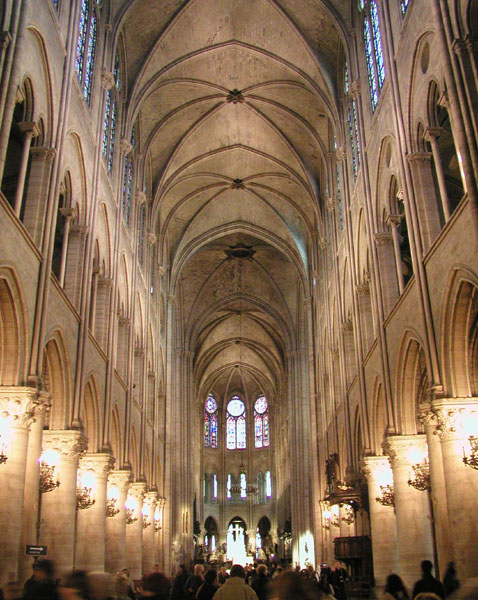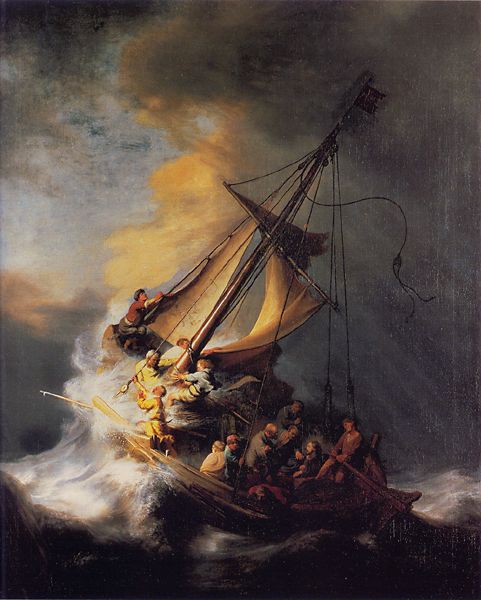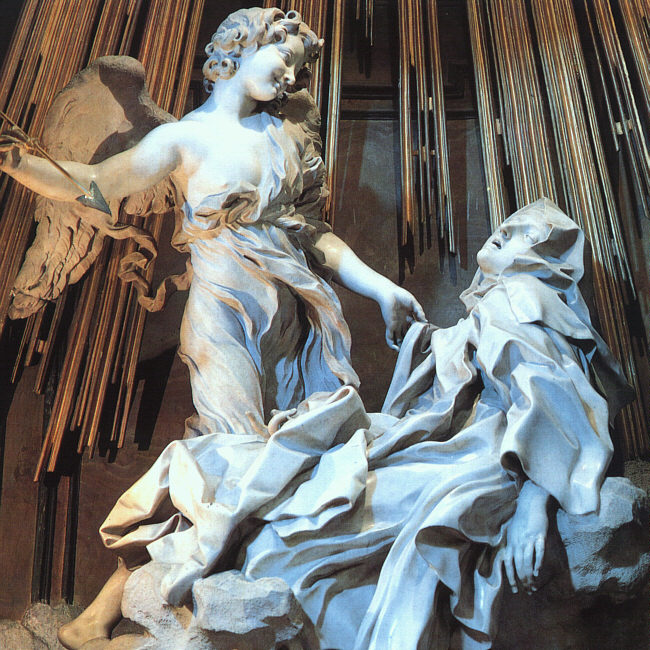
This is for a project that I am doing for Phatmass. Link

"I want to fight for Jesus…To win for him souls without number"

PRAYER IN TIME OF WARLink-Extracts of the Book
O God, who bring wars to nought and shield by Thy power all who hope in Thee, over-throwing those who assail them; help Thy servants who implore Thy mercy so that the fierce might of their enemy may be brought low and we may never cease to praise and thank Thee.
O God, who hast dominion over all realms and all kings, who by striking heals, and by pardoning saves: stretch out over us Thy mercy, so that by Thy power we may enjoy peace and tranquility and use them for our healing and amendment.
Through our Lord, Jesus Christ, who lives and reigns with Thee in the unity of the Holy Spirit, one God, forever and ever. Amen.

 Pope Benedict XVI, sporting a fur-trimmed hat in the rich red color of a Santa hat , waves to pilgrims upon his arrival in St. Peter's Square at the Vatican, Wednesday, Dec. 21, 2005 for his weekly general audience. The red hat with white fur trimming is known in Italian as the 'camauro.' It was popular among pontiffs in the 17th century. More recently, it was used by Pope John XXIII, who was also buried with it in 1963. (AP Photo/Alessandra Tarantino) LINK
Pope Benedict XVI, sporting a fur-trimmed hat in the rich red color of a Santa hat , waves to pilgrims upon his arrival in St. Peter's Square at the Vatican, Wednesday, Dec. 21, 2005 for his weekly general audience. The red hat with white fur trimming is known in Italian as the 'camauro.' It was popular among pontiffs in the 17th century. More recently, it was used by Pope John XXIII, who was also buried with it in 1963. (AP Photo/Alessandra Tarantino) LINK

Say with the Royal Prophets, “I opened my mouth and panted.” And your Savior will respond, “Surely I come quickly; you shall see me very soon.” Your eyes at the midnight Mass will gaze upon the elevated Host and your lips will utter, “My Lord and my God.” A few minutes more and the little Infant will have come to you. His Immaculate Mother did not hold him more truly in her arms that first Christmas midnight than you will have him, heart to heart. Then all the love of that Infant Redeemer will be poured out upon you. It’s a thirst of the heart of every creature that desires to be loved, and the love which can alone satisfy that craving is the Divine Love. Let your hearts delight in the love your God has for you, personally, individually.by Saint Katherine Drexel
Abstract
Current psychological theory and research affirm the positive affective and motivational consequences of having personal choice. These findings have led to the popular notion that more choice is better, that the human ability to desire and manage choice is unlimited. Findings from three studies starkly challenge the implicit assumption that having more choice is necessarily more intrinsically motivating than having fewer options. These three experiments which were conducted in field and laboratory settings show that people are more likely to purchase exotic jams or gourmet chocolates, and undertake optional class essay assignments, when offered a limited array of 6 choices rather than an extensive array of 24 or 30 choices. Moreover, participants actually reported greater subsequent satisfaction with their selections and wrote better essays when their original set of options had been restricted rather than expanded. Implications for future research are discussed.


How and when did the use of X-Mas in the place of Christmas get started?
Generally, the term X-mas has negative connotations today owing to its rather frequent use as a kind of secular euphemism for Christmas. The historical origins of the word, however, are found in the Greek for Christ (Kristos, Xristos). Early printers in the West adopted the X as an abbreviation for Christ to save a little money on the typesetting. The usage found wider acceptance and Xmas has been used by earnest Christians ever since.
While this origin of the term points to intentions that were entirely respectful, many of the current uses are far from rooted in good intentions.
COPYRIGHT 2005

According to legend there was a candy maker who wanted to invent a candy that was a witness to Christ. First of all, he used a hard candy because Christ is the rock of ages. This hard candy was shaped so that it would resemble a "J" for Jesus or, turned upside down, a shepherd's staff. He made it white to represent the purity of Christ. Finally a red stripe was added to represent the blood Christ shed for the sins of the world, and three thinner red stripes for the stripes He received on our behalf when the Roman soldiers whipped Him. Sometimes a green stripe is added as a reminder that Jesus is a gift from God. The flavor of the cane is peppermint, which is similar to hyssop. Hyssop is in the mint family and was used in the Old Testament for purification and sacrifice. Jesus is the pure Lamb of God, come to be a sacrifice for the sins of the world. So, every time you see a candy cane, remember the message of the candy maker: Jesus is the Christ!
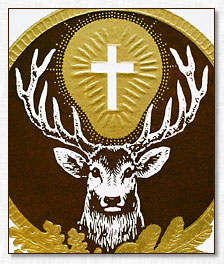
On Good Friday morn, when the faithful were crowding the churches, Hubert sallied forth to the chase. As he was pursuing a magnificent stag, the animal turned and, as the pious legend narrates, he was astounded at perceiving a crucifix between its antlers, while he heard a voice saying: "Hubert, unless thou turnest to the Lord, and leadest an holy life, thou shalt quickly go down into hell". Hubert dismounted, prostrated himself and said, "Lord, what wouldst Thou have me do?" He received the answer, "Go and seek Lambert, and he will instruct you."
Accordingly, he set out immediately for Maastricht, of which place St. Lambert was then bishop. The latter received Hubert kindly, and became his spiritual director. Hubert, losing his wife shortly after this, renounced all his honors and his military rank, and gave up his birthright to the Duchy of Aquitaine to his younger brother Eudon, whom he made guardian of his infant son, Floribert. Having distributed all his personal wealth among the poor, he entered upon his studies for the priesthood, was soon ordained, and shortly afterwards became one of St. Lambert's chief associates in the administration of his diocese.


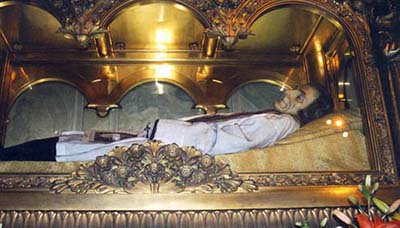

Husbands, love your wives, even as Christ loved the church and handed himself over for her to sanctify her, cleansing her by the bath of water with the word, that he might present to himself the church in splendor, without spot or wrinkle or any such thing, that she might be holy and without blemish. So (also) husbands should love their wives as their own bodies. He who loves his wife loves himself. For no one hates his own flesh but rather nourishes and cherishes it, even as Christ does the church, because we are members of his body....This is a great mystery, but I speak in reference to Christ and the church.(Eph 5:25-32)

Missionaries in the future will, more and more, see that their apostolate among the Moslems will be successful in the measure that they preach Our Lady of Fatima. Mary is the advent of Christ, bringing Christ to the people before Christ Himself is born. In an apologetic endeavor, it is always best to start with that which people already accept. Because the Moslems have a devotion to Mary, our missionaries should be satisfied merely to expand and to develop that devotion, with the full realization that Our Blessed Lady will carry the Moslems the rest of the way to her divine Son. She is forever a "traitor," in the sense that she will not accept any devotion for herself, but will always bring anyone who is devoted to her to her divine Son. As those who lose devotion to her lose belief in the divinity of Christ, so those who intensify devotion to her gradually acquire that belief.
A LAST piece of evidence comes from the New Testament: Examine John 20:25, where doubting Thomas speaks. The Witnesses’ New World Translation gives the verse as follows: "Unless I see in his hands the imprint of the nails, and put my finger into the place of the nails, and put my hand into his side, I will not believe." Even in their own translation John refers to hands (plural) and nails (plural). The inference is simple. (Catholic Answers, Cross or Torture Stake?)
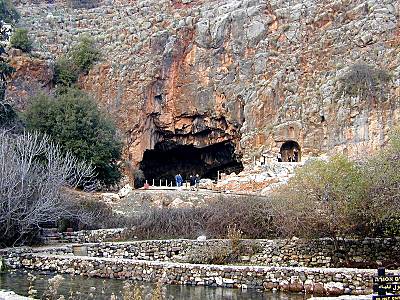
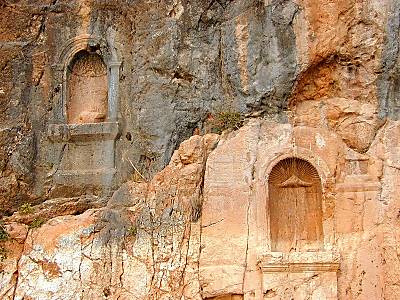
"I am thy father's spirit,
Doom'd for a certain term to walk the night,
And for the day confin'd to fast in fires,
Till the foul crimes done in my days of nature
Are burnt and purg'd away."
"Thus was I, sleeping, by a brother's hand
Of life, of crown, of queen, at once dispatch'd,
Cut off even in the blossoms of my sin,
Unhous'led, disappointed, unanel'ed,
No reck'ning made, but sent to my account
With all my imperfections on my head."
"There are more things in heaven and earth, Horatio,
Than are dreamt of in your philosophy."
MHR: You have stated that you see some mysteries or truths better in concrete stories rather than in abstract concepts-in novels rather than in philosophy. How has that been true for you?
PK: It has been true for me in my reading of C.S. Lewis, Chesterton, Tolkien, Charles Williams, Dorothy Sayers. These writers have plugged into the depths of the Christian tradition. Their images and stories have influenced me from below.
MHR: What do you mean by "below"?
PK: Let's use the image of water. A city is surrounded by walls and it is fighting a war. The enemy is trying to knock down the walls, but they can't do it because the walls are too strong. Then a great rainstorm comes. As the rain suddenly gets underneath the walls and softens the ground, the walls fall down and the city is conquered.
Rational arguments are like bullets. They're useful, but if we're going to conquer the city that is the world, we need rain and not just bullets. Images and attractive symbols are like the rain. They soften the ground as they seep into the unconscious. Lewis called it "baptizing the imagination."
MHR: Is the study of literature important for the church?
PK: It is crucial-absolutely crucial. We are still deeply influenced by stories. We learn morality more from stories than from anything else. If we're not good storytellers, and if we're not sensitive to good storytellers, we'll miss out on the most powerful means of enlightening ourselves and transforming our world apart from a living, personal example.
Christianity has always produced great writers. But, unfortunately, I cannot name a single great one who is alive today. Walker Percy and Flannery O'Connor may be the two last great Christian writers. I'm sure there will be more, because it is in our tradition.
______________________________________
I was reading a book called The Tipping Point and it gave me an idea. In the book it talks about a study that was done with a pamphlet on tetanus with college students. They found that the students learned the information that was in the pamphlet, and that they believed the information, but despite this only 3% went out and got a tetanus shot. They did a follow-up study and this time they again handed out the same pamphlet but they included practical information of a map of where the campus clinic was and times when the shots were available. They then found that 28% of the students obtained a tetanus shot. The practical information was not anything that the students didn't already know but it acted like a trigger helping them make the first step.
Like the pamphlet we have been giving out good information and a lot of people believe but there is not the trigger that gets them to actively seek entrance into the Catholic Church. So some of my friends at Phatmass and I came up with this link that gives practical and simple steps on how to become Catholic. Please post this link on you websites to introduce people to the possiblity of entering the Catholic Church. May it be a trigger with God's grace.
It won’t let me place the code within the blog for some reason. So please go HERE for the code.


“A sacrifice”. Oldmary whispered, “is when you take a heavy load on your back, like a hurt or a not-fairness. You give it to God and he puts it on the Gross of Jesus, the Big Sacrifice, and the Mass whish is also the Big Sacrifice. Then you have a part in it.”
“What kind of part?” Rose whispered.
“Part of mending.”
“Like sewing?”
“Yes. Sewing the ripped hide. Sewing the cut flesh. Stopping the blood that is pouring out too fast.”
“That is sacrifice?”
“That is sacrifice.”
“Does it hurt?”
“Yes.”
“Oh."
(A Cry of Stone, Michael O'Brien)

why, mr. Anderson, why? why, why do you do it? why, why get up? why keep fighting? do you believe you're fighting for something, for more than your survival? can you tell me what it is, do you even know? is it freedom or truth, perhaps peace - could it be for love? illusions, mr. Anderson, vagaries of perception. temporary constructs of a feeble human intellect trying desperately to justify an existence that is without meaning or purpose. and all of them as artificial as the matrix itself. although, only a human mind could invent something as insipid as love. you must be able to see it, mr. Anderson, you must know it by now! you can't win, it's pointless to keep fighting! why, mr. Anderson, why, why do you persist? -agent Smith, Matrix Revolutions
Only way to correct these distortions is to focus more time on the central tenants than on the controversial. Apologetics must become secondary, while spirituality and theology become primary. This is indirect approach at its best. Reaping the fruit of the central tenants will spill over into the secondary making a more congruent and comprehensive defense. Maybe the indirect approach to apologetics is a straighter line to the truth when it goes unexpectedly through the central tenants first to finally address the controversial. The trick is being creative enough to lead them on this path without loosing them.

---------------------------------
The authentic image of God in the world is the image of crucified love -- nothing else. All the profusion of imagery in the Spiritual Canticle can only be explained and justified as the deployment of the 'hidden treasures' of this one image.
John carved crucifixes, but more than that, he drew a little oval sketch in Indian ink, about five. centimeters in diameter, to explain to one of his brethren the vision he had of the crucified in the chapel gallery. The sketch shows the hanging body with such staggering foreshortening that the technique alone 'presupposes long practice'.
The image only becomes comprehensible if we picture the body to ourselves hanging not vertically (as it usually does in representations of the cross) but downward by its hands and feet, with the crossbeams lying horizontally, downward into the darkness of God's night, the night of the world and the night of Hell.
It is in full downward flight that Christ appears to John; a stupendous vertical movement hurls him down, like a rock, the head first and straining the chest behind it, the neck vertical, the nape of the neck bent over, the arms distended and dislocated, the shoulder blades arched. The face is hidden, only the nape of the neck, the hair falling down in front of his face, the cranium, the upper part of the back, the hip, are visible. The lighting is violent, cast from above. A certain brutality produces this effect, while the lines of the drawing are supple and soft.
The work has two main features: the first appears to be imposed upon the artist, the other is his own contribution. What is imposed is the soaring vision, the apparition hurtling madly downward in the light, the divine body with specks of shadow, made of nerves rather than bones. What is imposed is to be seen in the arms composed of wounded, painfully swollen tissue, the suppleness of the narrow chest, which appears to be in flight from the unyielding wood, to be trying to detach itself and throw itself onto the ground. Under the force gravity the left wrist has been torn, and the nail has been reinserted into the swollen soft hand.
The heart bleeds in a long blackish stream on to the rigid chest ... John's own personal contribution is the sovereign allure of this vibrant sketch, full of intensity and at the same time almost relaxed, so delicately and with such quickness of touch has the artist worked. Artistic effectiveness is completely subordinated to the significance of the event. The impression almost of cruelty is revealed in an uncompromising anatomical representation (we must not forget that the young Juan de Yepes, at the age of twenty, was an orderly at the hospital ... of Medina del Campo). (Florisoone)
Florisoone reflects on the opportunities John might have had, at the time the sketch was drawn (1572-1577 in Avila), of seeing imitations of Italian originals in vertical perspective: Michelangelo's Last Judgment, which was imitated by Spanish artists, the early works of Tintoretto (El Greco only appears later). Elements of pictures, or of their copies, that John had seen may well have entered into his vision and its depiction, for 'God speaks the language of time and place'; 'yet in power of dramatic expression and in technical skill St John of the Cross surpassed the innovations of Michelangelo, Correggio, Tintoretto and El Greco, remarkable enough though they are'. (Florisoone)
----------------------------
http://praiseofglory.com/johncrossvonb.htm
I dont quite understand the Othodox Flip mode as of yet! ___________________________ From an Orthodox Christian:
I'm with that
Look at Jesus throw up this "East Side" sign

------------------------------------
Nothing is more difficult for one who teaches this poem to students than to convince them that all of the damned souls, no matter how attractively they present their own cases, are to be seen as justly damned. The poem creates some of its drama from the tension that exists between the narrator’s view of events (in Inferno often represented by Virgil’s interpretive remarks) and that of the protagonist. What makes our task as readers difficult is that at some pivotal moments neither the narrator nor Virgil offers clear moral judgments. Instead, Dante uses irony to undercut the alluring words of sinners who present themselves as victims rather than as perpetrators of outrage in the eyes of God. Guido da Pisa’s gloss (to Inf. XX, 28–30) puts the matter succinctly: "But the suffering of the damned should move no one to compassion, as the Bible attests. And the reason for this is that the time for mercy is here in this world, while in the world to come there is time only for justice."
If it was John Milton’s task in Paradise Lost to "justify the ways of God to men," Dante before him had taken on the responsibility of showing that all that is found in this world and in the next is measured by justice. Everything in God is just; only in the mortal world of sin and death do we find injustice. And it is small wonder that Dante believes there are only few living in his time who will find salvation (Par. XXXII, 25–27). Words for "justice" and "just" recur frequently in the poem, the noun some thirty–five times, the adjective some thirty–six. If one were asked to epitomize the central concern of the Comedy in a single word, "justice" might represent the best choice.
In the Inferno we see this insistence on God’s justness from the opening lines describing Hell proper, the inscription over the gate of Hell (III, 4): "Giustizia mosse il mio alto fattore" (Justice moved my maker on high). If God is just, there can be absolutely no question concerning the justness of his judgments. All who are condemned to Hell are justly condemned. Thus, when the protagonist feels pity for some of the damned, we are meant to realize that he is at fault for doing so. This is perhaps the most crucial test of us as readers that the poem offers. If we sympathize with the damned, we follow a bad example. In such a view, the protagonist’s at times harsh reaction to various sinners, e.g., Filippo Argenti (canto VIII), Pope Nicholas III (canto XIX), Bocca degli Abati (canto XXXII), is not (even if it seems so to some contemporary readers) a sign of his falling into sinful attitudes himself, but proof of his righteous indignation as he learns to hate sin.
If some readers think that the protagonist is occasionally too zealous in his reactions to sinners, far more are of the opinion that his sympathetic responses to others correspond to those that we ourselves may legitimately feel. To be sure, Francesca da Rimini (canto V) is portrayed more sympathetically than Thaïs (canto XVIII), Ulysses (canto XXVI) than Mosca dei Lamberti (canto XXVIII), etc. Yet it also seems to some readers that Dante’s treatment of Francesca, Ulysses, and others asks us to put the question of damnation to one side, leaving us to admire their most pleasing human traits in a moral vacuum, as it were.
It is probably better to understand that we are never authorized by the poem to embrace such a view. If we are struck by Francesca’s courteous speech, we note that she is also in the habit of blaming others for her own difficulties; if we admire Farinata’s magnanimity, we also note that his soul contains no room for God; if we are wrung by Pier delle Vigne’s piteous narrative, we also consider that he has totally abandoned his allegiance to God for his belief in the power of his emperor; if we are moved by Brunetto Latini’s devotion to his pupil, we become aware that his view of Dante’s earthly mission has little of religion in it; if we are swept up in enthusiasm for the noble vigor of Ulysses, we eventually understand that he is maniacally egotistical; if we weep for Ugolino’s piteous paternal feelings, we finally understand that he, too, was centrally (and damnably) concerned with himself, even at the expense of his children.
Dante’s innovative but risky technique was to trust us, his readers, with the responsibility for seizing upon the details in the narratives told by these sympathetic sinners in order to condemn them on the evidence that issues from their own mouths. It was indeed, as we can see from the many readers who fail to take note of this evidence, a perilous decision for him to have made. Yet we are given at least two clear indicators of the attitude that should be ours. Twice in Inferno figures from Heaven descend into Hell to further God’s purpose in sending Dante on his mission. Virgil tells of the coming of Beatrice to Limbo. She tells him, in no uncertain terms, that she feels nothing for the tribulations of the damned and cannot be harmed in any way by them or by the destructive agents of the place that contains them (Inf. II, 88–93). All she longs to do is to return to her seat in Paradise (Inf. II, 71). And when the angelic intercessor arrives to open the gates of Dis, slammed shut by the rebellious angels against Virgil, we are told that this benign presence has absolutely no interest in the situation of the damned or even of the living Dante. All he desires is to complete his mission and be done with such things (Inf. IX, 88, 100–103).
Such indicators should point us in the right direction. It is a continuing monument, both to the complexity of Dante’s poem and to some readers’ desire to turn it into a less morally determined text than it ultimately is, that so many of us have such difficulty wrestling with its moral implications. This is not to say that the poem is less because of its complexity, but precisely the opposite. Its greatness is reflected in its rich and full realization of the complicated nature of human behavior and of the difficulty of moral judgment for living mortals. It asks us to learn, as does the protagonist, as we proceed.
---------------------------------------
http://www.firstthings.com/ftissues/ft9904/articles/hollander.html

 If it is a brain I would think that Michelangelo is saying that we are made in the image of God. Our ability to reason and love makes us like God and the human brain signifies this ability.
If it is a brain I would think that Michelangelo is saying that we are made in the image of God. Our ability to reason and love makes us like God and the human brain signifies this ability.
There are also other human anatomy parts that are in other sections of the Sistine Chapel. Here is one example;

To read more on this please go to the following links.
